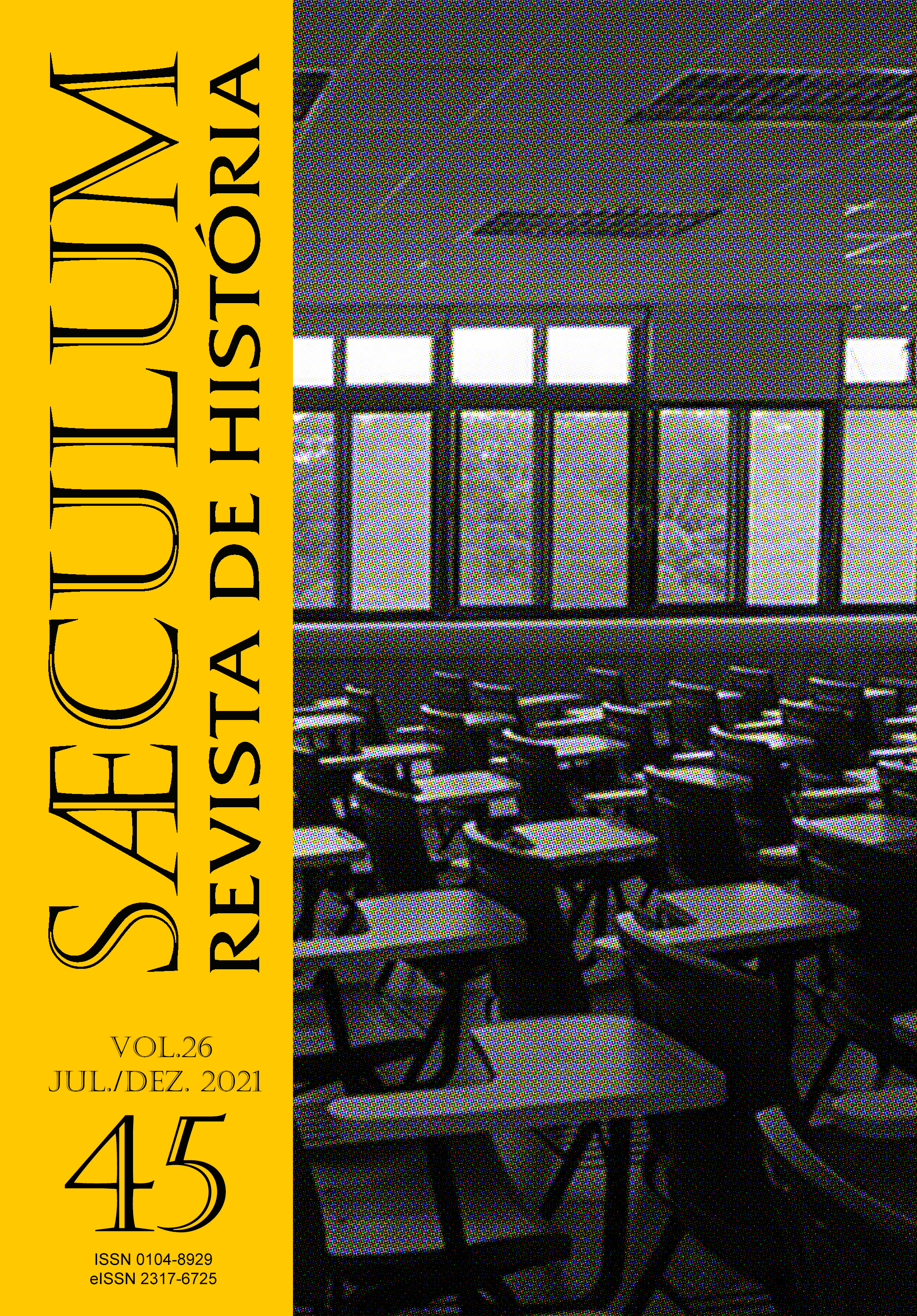Opacity in Digital Databases and Historical Research
DOI:
https://doi.org/10.22478/ufpb.2317-6725.2021v26n45.58641Keywords:
Digital Databases, History, Digital Humanities, OpacityAbstract
Considering the pervasive role of computing and internet, the questions of accessibility and availability of resources, collections, etc., more than ever occupy a central space in the discussions of academic circles. Here, we focus the digital tools that are available to historians, a discussion, barely carried out in Brazil, concerning the development and usage of Digital Databases for Historical Research. The present article proposes to discuss the specific problematic related to the concept of opacity, which is found in the project phase itself of the development of databases, observing how it impacts silently, but fundamentally, in the possibilities of research that are made available for users of such databases. Therefore, we begin with a theoretical discussion concerning the constitution, development and usages of digital databases, and follow it with an analysis of real examples, demonstrating the issues related to opacity.
Downloads
References
BERRY, David. Introduction: Understanding the Digital Humanities. In: BERRY, David (ed.). Understanding Digital Humanities. New York: Palgrave Macmillan, 2012, p. 1-20. DOI: https://doi.org/10.1057/9780230371934_1
CAIUT, Fábio. Administração de Bancos de Dados. Rio de Janeiro: Escola Superior de Redes, 2015.
DARLACK, James Marion. Web Review: Perseus Digital Library. Theological Librarianship, v. 9, n. 1, p. 11-15, 2016. DOI: https://doi.org/10.31046/tl.v9i1.423
EDELSTEIN, Dan et al. Historical Research in a Digital Age: Reflections from the Mapping the Republic of Letters Project. The American Historical Review, v. 122, n. 2, 2017, p. 400-424. DOI: https://doi.org/10.1093/ahr/122.2.400
ELMASRI, Ramez; NAVATHE, Shamkant. Sistemas de Bancos de Dados. São Paulo: Pearson, 2011.
EVANS, Leighton; REES, Sian. An Interpretation of Digital Humanities. In: BERRY, David (ed.). Understanding Digital Humanities. New York: Palgrave Macmillan, 2012, p. 21-41. DOI: https://doi.org/10.1057/9780230371934_2
FLORES, Mariana Flores da Cunha Thompson. Os bancos de dados, os arquivos digitais e o papel do historiador. Acervo, v. 28, n. 2, p. 240-251, 2015.
GIL, Tiago. Como se faz um banco de dados (em história). Porto Alegre: Ladeira Livros, 2015.
HAYLES, Katherine. How We Think: Transforming Power and Digital Technologies. In: BERRY, David (ed.). Understanding Digital Humanities. New York: Palgrave Macmillan, 2012, p. 42-66. DOI: https://doi.org/10.1057/9780230371934_3
KIRESEN, Evelyn-Margaret; KLUGMAN, Simone. The use of Online Databases for Historical Research. RQ, v. 21, n. 4, p. 342-351, 1982.
LÉVY, Pierre. O que é o Virtual? Rio de Janeiro: Editora 34, 1996.
LUCENA, Ingrid Guimarães de. Papel, digitalização, conjuntos de dados ou a demolição dos exames censórios do Conservatório Dramático Brasileiro (1843-1864). 2020. 33 f. Trabalho de Conclusão de Graduação em História - Universidade de Brasília, Brasília, 2020.
MANOVICH, Lev. Database as Symbolic Form. In: VESNA, Victoria (ed.). Database Aesthetics. Minneapolis: University of Minnesota Press, 2007, p. 39-60. DOI: https://doi.org/10.5749/j.cttts7q7.6
MEDICI, Catherine. Mapping the Republic of Letters. Renaissance and Reformation / Renaissance et Réforme, v. 42, n. 4, p. 180-184, 2019. DOI: https://doi.org/10.33137/rr.v42i4.33717
RIEDER, Bernhard; RÖHLE, Theo. Digital Methods: Five Challenges. In: BERRY, David (ed). Understanding Digital Humanities. New York: Palgrave Macmillan, 2012, p. 67-84. DOI: https://doi.org/10.1057/9780230371934_4
SMITH, Abby. Why Digitize? Washington: Council on Library and Information Resources, 1999. DOI: https://doi.org/10.1515/mfir.1999.28.4.110
SICHELERO, Guilherme Giotti. A construção do banco de dados na pesquisa histórica: análise de uma experiência. 2020. 86 f. Trabalho de Conclusão de Graduação em História – Universidade Federal do Rio Grande do Sul, Porto Alegre, 2020.
SUEIRO, Nieves Pena; GARCÍA, Sandra Álvarez. El Catálogo y Biblioteca digital de relaciones de sucesos: bases de datos bibliográficas, textos e imágenes. Janus, Anexo 1, 2014, p. 335-345.
SUEIRO, Nieves Pena; PLACES, Ángeles Saavedra. Obsolescencia y resiliencia en Humanidades digitales El caso de la Biblioteca Digital de Relaciones de Sucesos. Artnodes, n. 23, p. 79-88, 2019. DOI: https://doi.org/10.7238/a.v0i23.3243
TEOREY, Toby et al. Projeto e Modelagem de Bancos de Dados. São Paulo: Elsevier, 2014.
THALLER, Manfred. A Draft Proposal for a Standard for the Coding of Machine Readable Sources. Historical Social Research / Historische Sozialforschung, n. 40, p. 3-46, 1986.
VITALE, Valeria. Transparent, Multivocal, Cross-disciplinary: The Use of Linked Open Data and a Community-developed RDF Ontology to Document and Enrich 3D Visualisation for Cultural Heritage. In: BODARD, Gabriel; ROMANELLO, Mateo (eds.). Digital Classics Outside the Echo-Chamber: Teaching, Knowledge Exchange & Public Engagement. London: Ubiquity Press, 2016.
Downloads
Published
How to Cite
Issue
Section
License
Copyright (c) 2021 Nelson Bondioli

This work is licensed under a Creative Commons Attribution-NonCommercial 4.0 International License.
A revista Sæculum permite aos autores a manutenção dos direitos autorais pelo seu trabalho, no entanto eles devem repassar direitos de primeira publicação ao periódico.











